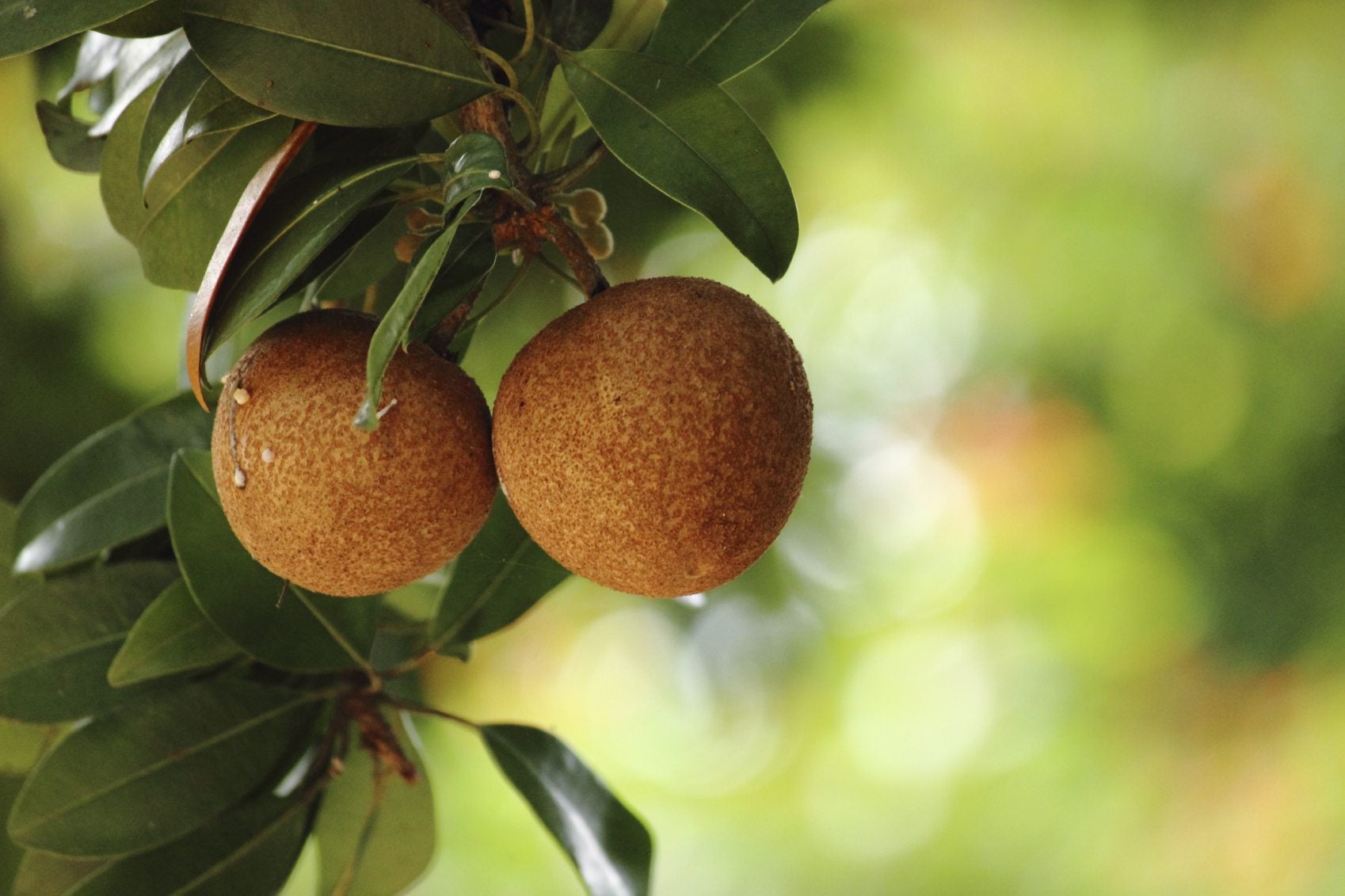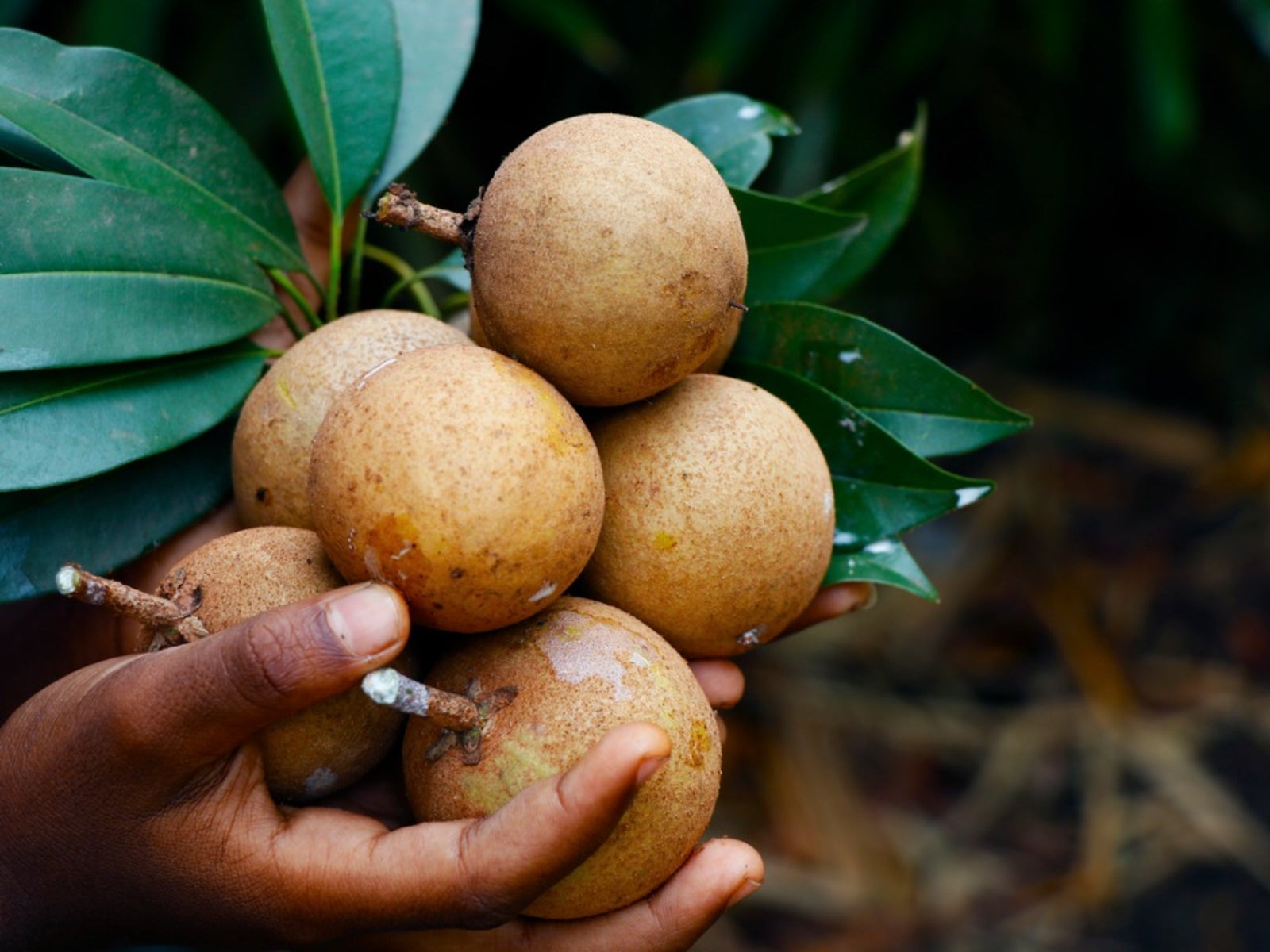Sapodilla Problems: Fruit Dropping From Sapodilla Plant

If you live in the warmer latitudes, you may have a sapodilla tree in your yard. After waiting patiently for the tree to blossom and set fruit, you go to check its progress only to find that the fruit is dropping from the sapodilla plant. Why do the baby sapodillas fall from the tree and what sapodilla tree care might prevent this in the future?
Why Baby Sapodillas Fall
Quite probably a Yucatan native, sapodilla is a slow growing, upright, long living evergreen tree. Tropical specimens can grow to 100 feet (30.5 m.), but grafted cultivars are much smaller at 30 to 50 feet (9-15 m.) in height. Its foliage is medium green, glossy, and alternate, and makes a lovely ornamental addition to the landscape, not to mention its delicious fruit. The tree blooms with small, bell-shaped flowers several times per year, although it will only yield fruit twice a year. A milky latex, known as chicle, exudes from the branches and trunk. This latex sap is used to make chewing gum. The fruit, actually a large ellipsoid berry, is round to oval and about 2 to 4 inches (5-10 cm.) across with brown, grainy skin. The flesh is yellow to brown or reddish brown with a sweet, malty flavor, often containing anywhere from 3 to 12 black, flattened seeds. Sapodilla fruit drop is not a common problem with the trees if they are healthy. In fact, sapodilla problems are minimal provided the tree is in a warm location, although sapodillas are not strictly tropical. Mature trees can handle temperatures of 26 to 28 degrees F. (-3 to -2 C.) for a short time. Young trees are obviously less established and will be damaged or killed at 30 degrees F. (-1 C.). So, a sudden cold snap might be one reason for fruit dropping from a sapodilla plant.
Sapodilla Tree Care
Proper care of a sapodilla tree will ensure a nice long life of bearing fruit. Keep in mind that a sapodilla will take anywhere from five to eight years to bear fruit. Young trees may flower, but not set fruit. Sapodillas are remarkably tolerant trees. Ideally, they prefer a sunny, warm, frost-free location. They do well in both humid and arid environments, although consistent irrigation will help the tree to flower and fruit. This specimen also does well as a container plant. Sapodillas are wind tolerant, adapted to many types of soil, drought-resistant, and soil salinity tolerant. Young trees should be fed in the first year every two to three months with ¼ pound (113 g.) of fertilizer, increasing gradually to a full pound (454 g.). Fertilizers should contain six to eight percent nitrogen, two to four percent phosphoric acid, and six to eight percent potash. After the first year, apply fertilizer two to three times per year. Sapodilla problems are generally few. All in all, this is an easy tree to care for. Cold stress or “wet feet” can adversely affect the sapodilla, potentially resulting in not only sapodilla fruit drop but also the death of the tree. Also, although the tree likes sun, it can, especially immature trees, get sunburned so it might be necessary to move it under cover or provide a shade cloth.
Gardening tips, videos, info and more delivered right to your inbox!
Sign up for the Gardening Know How newsletter today and receive a free copy of our e-book "How to Grow Delicious Tomatoes".

Amy Grant has been gardening for 30 years and writing for 15. A professional chef and caterer, Amy's area of expertise is culinary gardening.
-
 Moody Blooms For Spring: 8 Types Of Black Flowers To Add Drama To Spring Displays
Moody Blooms For Spring: 8 Types Of Black Flowers To Add Drama To Spring DisplaysFrom midnight burgundies to inky violets, several types of black flowers can enrich and embolden a spring display. Try these brooding bloomers for a moody garden
By Tonya Barnett
-
 Can Snake Plants Live Outside? Everything You Need To Know For Snake Plants Al Fresco
Can Snake Plants Live Outside? Everything You Need To Know For Snake Plants Al FrescoSnake plants can live outside given the right conditions, but be careful that they don't take over! Learn the best way to use snake plants in your landscape.
By Mary Ellen Ellis
